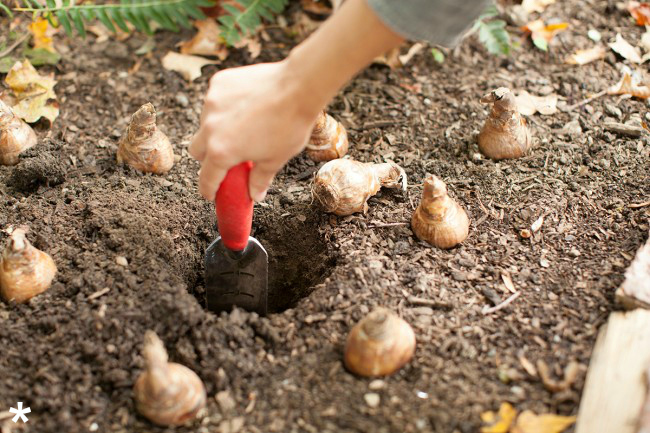As winter approaches, visions of brightly blooming gardens run through the optimistic minds of many naturalists. While those blasts of color that appear in spring are still many dark months away, it’s during the cool evenings of fall and winter when gardeners dream of the glorious blooms they expect to see after planting bulbs.
This is the time to plan your garden. This is the time to plant your flower bulbs. Once the nighttime thermometers hover between 40 and 50 degrees, plant your bulbs. Temperatures vary depending on your elevation in the Appalachians, but bulb-planting season arrives in Central Appalachia some time from the middle to the end of October. Many say that even after the first freeze, bulbs will still have time to take root — even if you have to scrape a little ice off the top earth.
Best Blooms for Appalachian Gardens
Tulips of every kind grow bountiful in the mountains. Plant Darwin Hybrids, Pink Impressions, Red and Golden Oxfords and an Appalachian favorite — the Apricot Beauty. Tulips are ideal for gardeners who don’t want to fool with fall bulb planting every year because they will continue to sprout perennially year after year.
Other bulb beauties to fill your gardens include the hearty daffodils that dot the landscape in the very earliest days of spring. Hyacinths, lilacs, lilies and irises also will enjoy very long lifespans, gracing your gardens every spring and summer.
Tips for Planting
- Give tulips about six inches of space between them. Daffodils need 8–10 inches of space. You can crowd most other varieties together, putting about 12 bulbs in a 12-inch space.
- Plant about six inches deep.
- Water immediately after planting.
- Add fertilizer after planting; do not put fertilizer in the hole with the bulb.
- Cover with about four inches of lightweight mulch, like pine needles.
When You Can’t Wait
Bulbs can be “forced” to bloom early both indoors and outside, especially when undergoing a particularly warm Appalachian winter. Trick the bulbs into thinking they’ve been in cold ground long enough by putting them in your refrigerator.
Carefully choose bulbs that are fresh and often marked “good for forcing.” Open boxes and bags to ventilate the bulbs. Remove any apples from your fridge while you’re going through this process because apples emit ethylene gas that can kill the flowers. Cool for eight to 10 weeks or follow the cooling instructions, and then plant outdoors for lovely winter blossoms.
Create beautiful indoor flowers from bulbs in pots. Use plastic or clay pots; just make sure there’s room for drainage. Place bulbs about a finger-width apart and add good potting soil. Don’t pack the soil around the bulbs. Put the pots in a spare fridge or outside in a shed for about 10 weeks and bring them indoors when the first stems begin to poke above the dirt.
After enjoying the blooms from your forced potted flowers, replant the bulbs outdoors. You may have to wait a year or two to see them blossom again because they need time to regain their energy. Enjoy your gardens either way — whether you have fresh blooms to bring in the New Year or remain patient for the annual spring and summer shows.
Picture Credits: (Feature picture) bulbblog.com, (*) newagegarden.net
